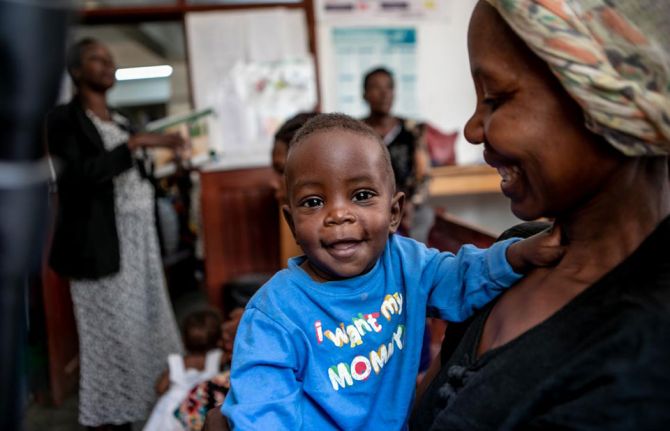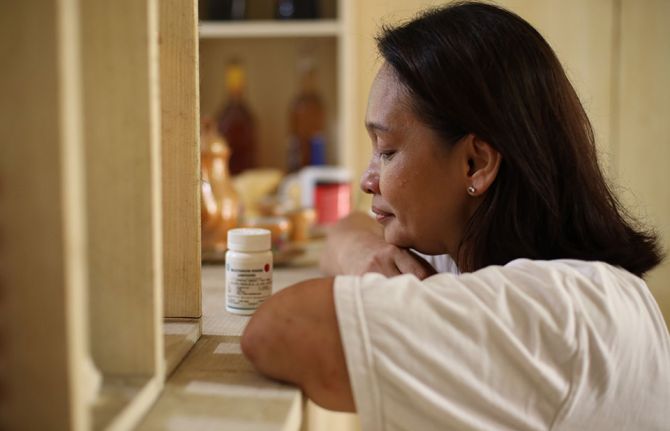

Feature Story
UNAIDS joins partners to call for better testing, treatment and prevention of HIV and TB among children
20 November 2020
20 November 2020 20 November 2020On World Children’s Day, UNAIDS is joining with partners to call for accelerated access to better tools to prevent, diagnose and treat HIV in children and tuberculosis (TB) in children living with HIV with a joint statement announcing the launch of the Rome Action Plan 2020.
Children living with HIV are disproportionately being left behind by the HIV response. Treatment coverage among children globally is extremely low. In 2019, only 53% of the estimated 1.8 million children living with HIV were found and on treatment. That means that 850 000 children living with HIV are not on life-saving HIV treatment. More than half of those missing children are in just five countries—the Democratic Republic of the Congo, Kenya, Mozambique, Nigeria and South Africa—and two thirds of those children are aged 5–14 years. Furthermore, we are not doing enough to prevent new infections, with 150 000 new HIV infections among children aged under 15 years in 2019. Therefore, specific programmes and activities must be rapidly deployed to reach those children and allow them to benefit from the extraordinary expansion of paediatric innovations.
The reasons for this are manyfold. Mothers are not tested for HIV during pregnancy and breastfeeding and therefore cannot receive HIV treatment that will keep them healthy and prevent their child becoming HIV infected. Children are not tested for HIV at or shortly after birth so cannot benefit from early HIV treatment with better outcomes. The most commonly available HIV treatments for HIV are not child-friendly, often tasting bitter and cannot be dissolved or sprinkled on food for infants and young children who cannot swallow tablets.
Children and especially children living with HIV are particularly vulnerable to TB, which is the commonest cause of death among people living with HIV. TB among children living with HIV is difficult to diagnose and the treatment is complicated and unpleasant to take, especially in combination with HIV treatment.
“The Rome Action Plan has driven new diagnostics and more effective, affordable and palatable treatments for children living with HIV. We have a moral obligation to now ensure those tools actually reach the children who need them most,” said Shannon Hader, UNAIDS Deputy Executive Director, Programme. “We need action—to reach those children countries need to focus in on their data, understand where and how the children who are missed are likely to be reached and eliminate any artificial barriers—from policy to implementation—that get in the way. And as for innovation—better diagnostics and treatments for both HIV and TB among children—we’re not done yet. We will continue to advocate and partner for more and better.”
Since 2016, as part of the UNAIDS and United States President’s Emergency Plan For AIDS Relief faith initiative, the Vatican has been bringing together key partners in a series of high-level dialogues to find better ways to prevent, diagnose and treat HIV in children, and this year included a focus on TB among children living with HIV for the first time. On 5 and 6 November, the Vatican’s Cardinal Turkson convened the virtual Rome Five meeting. This innovative dialogue brought together leaders from the private and public sectors, governments, regulatory authorities, faith-based and community-based organizations and other implementing partners to find solutions to reduce the burden of HIV and TB among children.
The meeting resulted in a new Rome Action Plan 2020, a series of ambitious commitments made by participating organizations aimed at overcoming the bottlenecks to HIV and TB services for children. Among the many commitments made by the partner organizations, UNAIDS has committed to supporting governments to collect and report on the burden of HIV and TB among children so that national responses can be targeted to where they are most needed. UNAIDS will set and report on ambitious age-specific global targets for the prevention, testing and successful treatment of HIV in children and TB in children living with HIV. UNAIDS will continue to advocate at the highest political level for increased investment and committed actions at the country level so that the world can get on track to ending AIDS and TB among children living with HIV.



